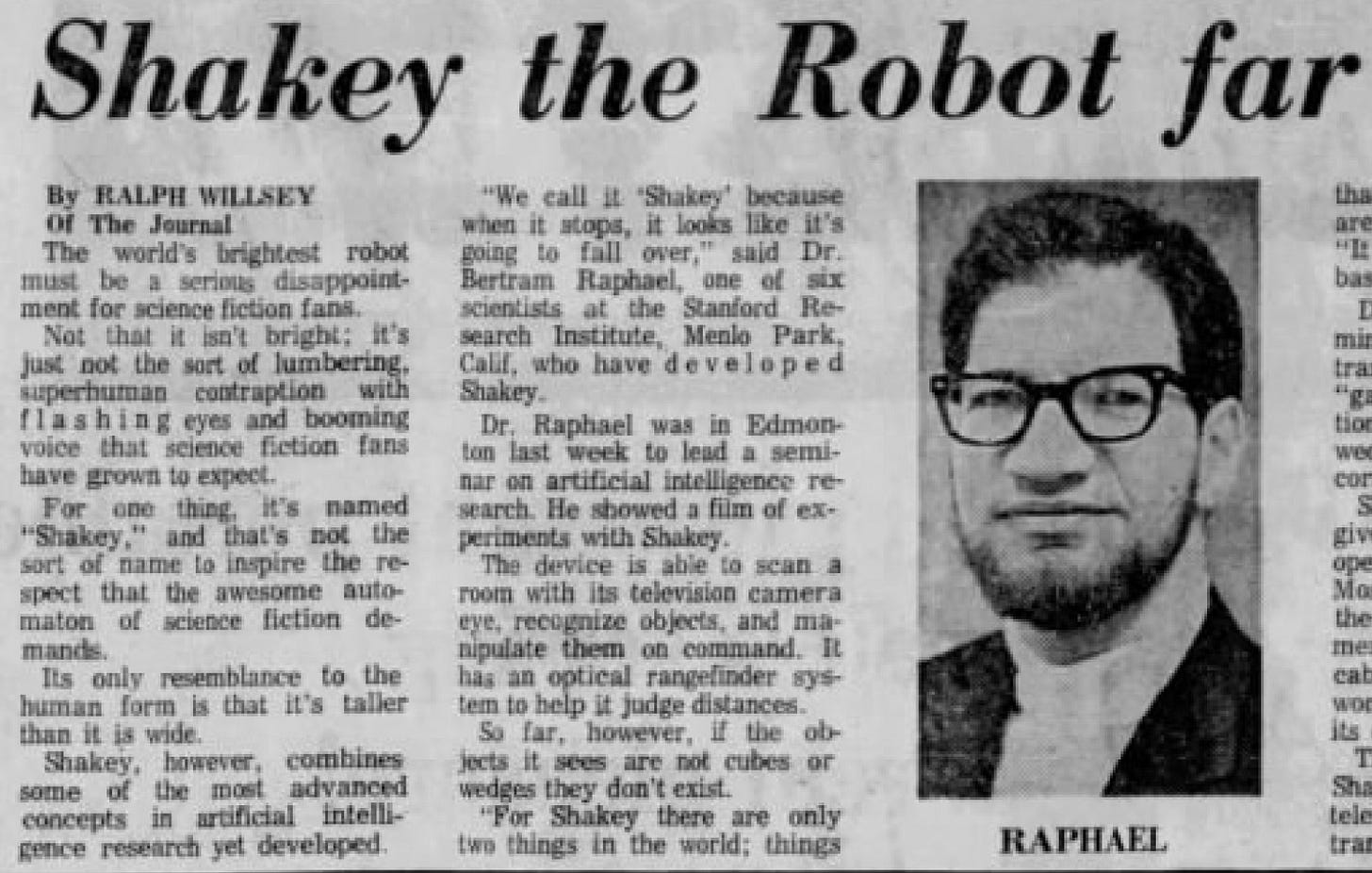🤖 When Stanford's Famous Robot Shakey Was Just... Shaky 📰
“Shakey the Robot far from science fiction ideal” from the Edmonton Journal on April 8, 1970, offers a refreshingly honest assessment of one of AI’s most celebrated early achievements. Shakey, developed at Stanford Research Institute, was groundbreaking as the first mobile robot that could perceive its environment and plan its own actions. But as this headline makes clear, even its creators knew it was nowhere near the intelligent robots of science fiction. The article discussed how Shakey took hours to cross a room, could only operate in carefully controlled environments with specially marked objects, and would freeze up when encountering anything unexpected.
This 1970 reality check is particularly valuable because Shakey is often mythologized in AI history as more capable than it actually was. While it represented real progress in combining computer vision, planning, and robotics, the robot struggled with tasks a toddler could handle effortlessly.
The honest framing in this headline shows that at least some journalists and researchers were trying to set realistic expectations, even as others were promising household robots within a decade. Today, when we watch videos of Boston Dynamics robots doing backflips or discuss autonomous vehicles, it is worth remembering that 55 years ago, getting a robot to simply push a block across a flat floor without human intervention was considered a miracle, yet still “far from science fiction ideal.”



Hey, great read as always. Really appreciate the reminder about early expectations. Funny how even the "shaky" first steps inspired so much future progess.